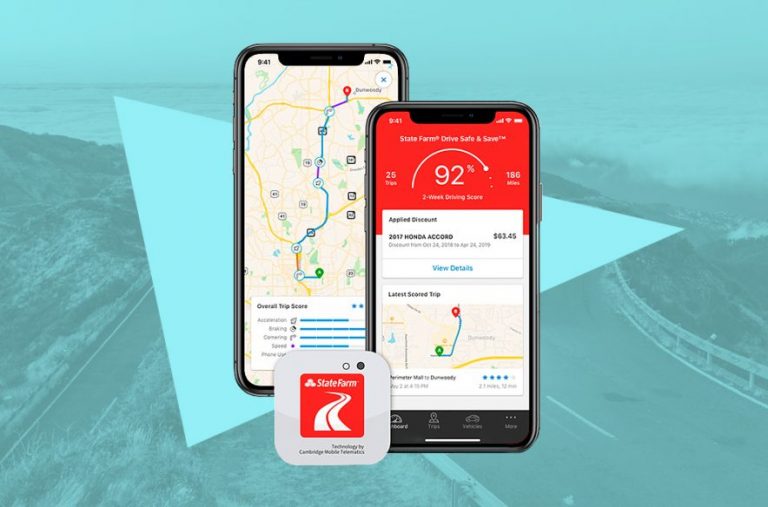Recently, I was training a room full of leaders at Microsoft (you know, the company that makes the software you’re probably using to read this email). On this particular visit, I was teaching them about Developing Passionate Followers. Microsoft dominates in an industry populated by the hyper-analytical and numerically inclined. So why would Microsoft hire Leadership IQ to address an issue as soft and fuzzy as developing passionate followers?
Here’s why: When employees are passionate about their job and their leader, they work better, faster and smarter. And you don’t have to be Bill Gates to realize that when employees are energized, they produce more work and better work with fewer errors.
What makes Microsoft so smart (and so enjoyable to work with) is that not only do they realize the value of having passionate employees, they also recognize the core truth about developing passionate followers: Policies don’t produce passionate employees, leaders do. You’ve probably heard the old adage you join a company, but you quit a manager. Well, that old adage is true. You can create all the policies and global initiatives you want, but ultimately an employee will only be truly passionate if they’re working for someone who inspires them.
So here’s the $64,000 question: How do you train leaders to inspire passionate followers?
I’m going to show you by giving you the 2 most important lessons from all of our years of teaching leaders how to develop passionate followers. Obviously we cover a lot more in our training courses than I can describe in an article like this, but if you can master these 2 lessons, you’ll be light-years ahead of your competitors.
Lesson #1: Distinguish between Management and Leadership
The first thing we need to clarify is the difference between management and leadership. In its simplest form, management is concerned with getting the trains to run on time. Management involves Defining the actions people need to take, Diagnosing whether they’re performing effectively, Developing them through effective feedback and then Reinforcing everything with robust accountability. Management lives in the realm of extrinsic motivation.
Leadership, by contrast, lives in the world of intrinsic motivation. Leadership involves Aspiration (giving people a sense that their work makes a difference in the world), Inspiration (instilling confidence that all challenges are surmountable), Stimulation (challenging people to exceed their own expectations) and Idealization (creating a bond of trust and respect between leaders and followers).
Management directs and improves what people do and how they do it. Leadership influences how passionate and inspired people feel about doing that work.
Distinguishing between management and leadership in this way should lead you to one inescapable conclusion: You need BOTH management and leadership to be successful. Executives that only employ management (without any leadership) are labeled as Marchers. They get the trains to run on time, but their people do it without passion (and without much loyalty). Executives that only employ leadership (without doing any management) are labeled as Dreamers. Their people are passionate, but they may not get the financial & operational results they need.
Executives that successfully perform BOTH management and leadership activities are Maestros. And this is the label you’re really aiming for. This is the executive that doesn’t need to coerce or bribe their people to get the trains to run on time, but rather does it by inspiring them and unleashing their inner passion.
When we train leaders on this topic, we always begin with an assessment that tells them whether they’re a Marcher, a Dreamer or a Maestro. Because depending on your particular challenge, and your unique mix of Marchers and Dreamers, you may need to customize your curriculum. If your challenge is getting employees to execute without excuses or better managing low performers, you need to develop management skills. If it’s developing more innovation or more passionate followers, you need leadership skills.
So my advice to you is this: Really think about what challenge you’re trying to address, and carefully decide whether you need more management or more leadership.
Lesson #2: Learn from Peak Experiences (Not Negative Experiences)
Because I’m writing about developing passionate followers, we’re really talking about leadership rather than management. And when you’re teaching leadership, it’s a good idea to give your lessons a positive frame (how can we do more of what went right) rather than a negative frame (what went wrong and how do we fix it). Just think about it: Can you really teach how to be inspiring when you’re asking people to spend all day wallowing in deeply negative issues?
When we’re training our numbers-driven Fortune 500 clients, where the managers have seen it all, done it all, and may be a little crusty and hardened from the experience, we’ve got to soften them up a bit. What that really means is that we need them to understand that this soft leadership stuff actually delivers bottom line value.
So here’s an exercise that we call Leadership Peak Experiences. This exercise gets people to recognize the profound bottom-line impact of great leadership, while at the same time helping them recognize that leadership is a definable and trainable set of skills.
To conduct this exercise, ask your managers to pair up and interview each other using the following 8 questions.
Leadership Peak Experiences Exercise
Remember a time from any period in your life that a leader (boss, teacher, mentor, friend, etc.) inspired you to achieve something that was both significant and difficult.
Vividly describe that experience (who was involved, when did it occur, where did it occur, what was the achievement, etc.)
Describe what made the achievement significant.
Describe what made the achievement difficult.
Imagine that naysayers were observing this situation. Describe the doubts that they might have expressed about your ability to achieve what you achieved.
Describe how the leader helped you overcome those doubts and difficulties.
What specifically did the leader do or say that inspired you? Be as specific as possible. (As a starting point, try to answer these questions: What words did they use, what did they teach you, how did they support you, how did they challenge you, how did they make you feel, etc.?)
What was it about your particular personality that made the leader’s words/actions so impactful?
Once you’ve completed the interviews and you debrief their conversations, your managers will make some significant discoveries. Here a just a few.
Leaders will recognize the powerful impact that a leader had on their performance. Just ask them whether they worked better, faster and harder because of this leader (the answer is always YES). You’ve now just demonstrated the business value of inspired employees.
Leaders will recognize the elegant simplicity of inspirational leadership. When you debrief the specific actions their leaders took to make them passionately tackle significant challenges, you will hear about some very repeatable techniques, like.
Listening in a way that communicates your understanding
Serving as a sounding board for employees without jumping in and taking over
Giving them targets that capture a moral high ground
Giving them perfectly difficult targets that weren’t doomed to failure or guaranteed to succeed
Eliminating certain dispiriting roadblocks
Leaders will recognize that anyone can elicit more passion from their employees. By learning from their peak experiences and dissecting what really made those experiences so powerful, they develop a roadmap to inspire their own employees.
Leaders will also recognize that they need to adapt their leadership techniques to certain types of employees. What worked to inspire them personally may not work to inspire someone else. And as they learn about why they responded in a particular way, they start to learn about how their employees will respond.
Once again, if we’re camped-out in your conference room training your leaders, we’ll be covering a lot more than I can put into an article like this. But Microsoft didn’t hire us to dryly recite an encyclopedia of leadership techniques. They hired us to transform how they think about leadership. Oh don’t worry, we gave them specific techniques. But before we could give them a toolbox of leadership techniques, we had to change their minds. And the 2 lessons I gave you above, will help you do just that.
Listen, we can teach leadership skills all day long (to any type or size organization). We can teach you how to speak to employees to inspire them, set inspirational goals, eliminate the demotivators that hold them back, and much more. That’s actually the easy part. The challenge that requires a little more work involves helping leaders understand the importance of passionate employees and recognizing that there are very specific actions that they can take to help their employees be more passionate.
Don’t ever let your leaders throw up their hands and say we’ve got employees that just can’t be inspired or getting employees inspired is too hard or it’s too lofty a goal or I don’t have time. It doesn’t take more time to inspire your folks. It just takes making some changes to the actions you’re already taking. You’re going to set goals for your employees. Why not just set more inspirational goals and communicate them in a more inspirational way? The net time required is exactly the same, but the results are exponentially better.









+ There are no comments
Add yours